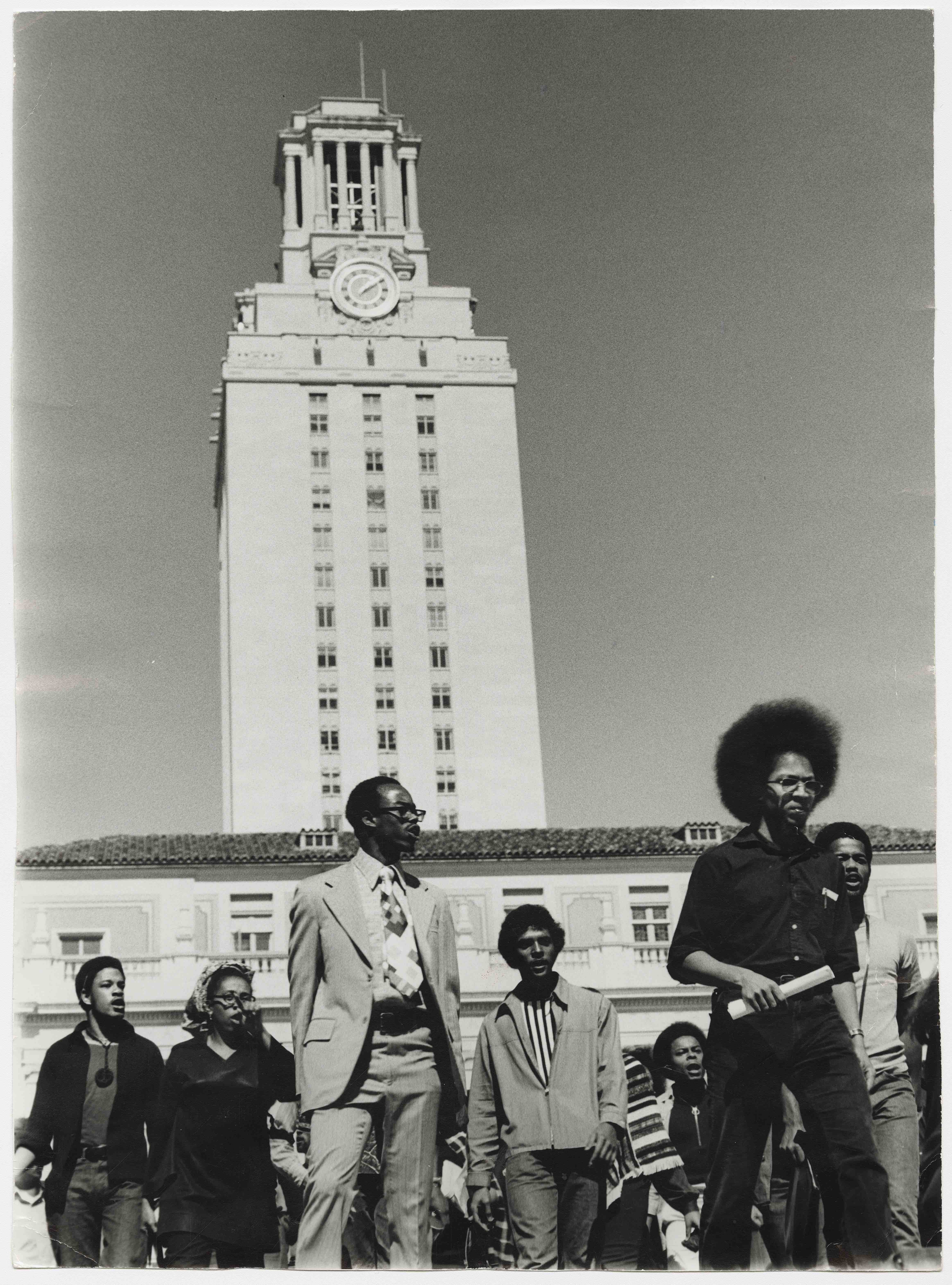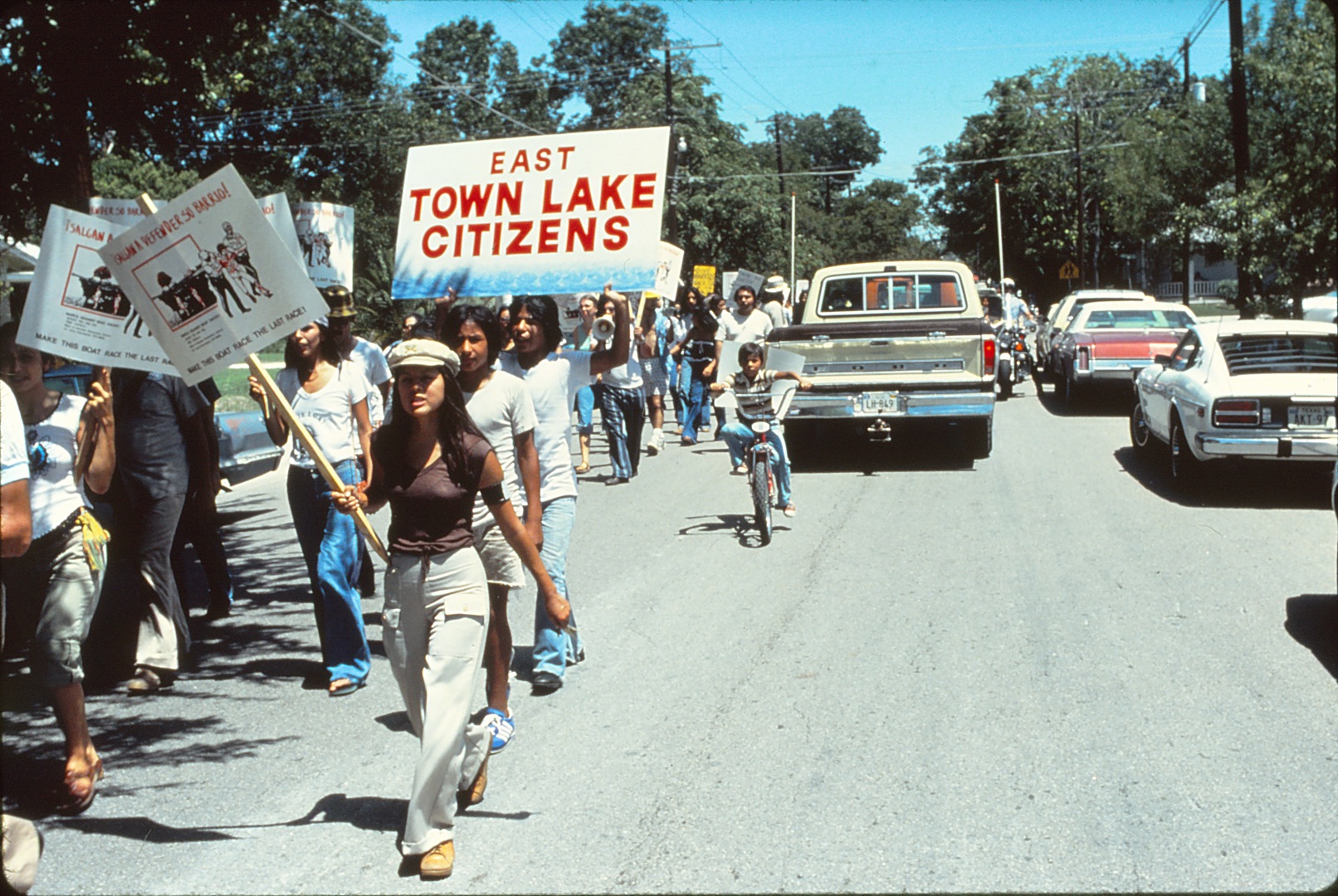Long before East Austin became synonymous with condominiums and trendy bars, it was home to Black and brown communities who were the foundation of the city. Before gentrification forced them out due to higher property taxes and a changing environment, nearly every corner east of Interstate 35 was beaming with Tejano cantinas and restaurants, and the the neighborhood’s nightclubs and shops catered to African Americans. Back then, East Austin offered an intimate community where neighbors worked together and went to school together.
Today, Joe’s Bakery & Coffee Shop is one of the few establishments left from this bygone era, but a new exhibit hopes to bring the past into focus in a fresh way, focusing on how the collaborations between Latinos and African Americans changed Austin.
The Civil Rights era brought about increasing political and social divisiveness between an already segregated east and west Austin. By the late 1960s and early 1970s, Austin became a prime setting for the rise of social activists and grassroots organizations.
Members of groups like the Brown Berets – a grassroots youth organization that served as the local chapter of the Mexican-American civil rights movement – and the Black Citizens Task Force – a social and economic justice group for people of African descent – used their voices and influence to bring about change in the Texan city.

The period of 1970 to 1983 was a time of political upheaval that forced Austin’s leadership to shift the ways it conducted government, police, school, and workforce business. These groups were key in the fight for equality. Those involved said that without a unified front among Black and brown populations, change may have not come about when or how it did.
During this time period, clashes among East Austin neighborhoods and police forced the City Council to remove environmentally disruptive drag boat races at Festival Beach during the annual Aqua Fest. University of Texas at Austin students protested inequalities faced by minorities on campus and created the Improvement of Minority Education, Enrollment, Employment, Equality, Etc. (TIME). Austin Welfare Rights Organization members led protests against proposed welfare check cuts.
“I felt we were not doing enough to incorporate Black and brown history in our own city.”
From January 9 to April 6, the Juntos/Together: Black and Brown Activism in Austin, Texas From 1970-1983 exhibit will give us an in-depth look at this alliance. Juntos/Together – curated by anthropologists Alan Garcia and Rachel E. Winston – will be on view at the George Washington Carver Museum, Cultural and Genealogy Center in Austin.
Garcia is a native Austinite and archivist who personally experienced the aftermath of gentrification. He created the Instagram account ATX Barrio Archive last summer to connect Austin’s current communities with remnants of the past. He quickly built a modest following resulting in people adding their own memories and photos to the account.
“I was tired of not seeing any of our local museums’ archives address gentrification in our city,” Garcia tells me. “I felt we were not doing enough to incorporate Black and brown history in our own city.”
Garcia shares photographs ranging from 1980s Chicano murals that no longer exist to intersectional demonstrations of the Ku Klux Klan. Seeing the account’s success, the Carver Museum’s staff approached him and Winston about unearthing the Black and brown community’s history of working together for an exhibit.

“History books tend to separate Black and brown communities in their narratives,” Garcia said. “They’re never shown working, fighting and living together. Before black and brown Austinites were allowed to buy property and live in white neighborhoods, there was co-existence and solidarity.”
They chose to focus on those 13 years because it was when several groups formed to fight for social issues – police brutality, educational inequality, and the negative impacts of gentrification on Black and brown working-class citizens – that are still front and center today.
“History books tend to separate Black and brown communities in their narratives.”
“Prior to this exhibit, this part of history hadn’t been shown in a museum or city-owned building,” Garcia says. “Being that (Carver Museum) is located in East Austin it made the most sense to us to display this history in close proximity to these neighborhoods and where there were primarily Black and brown schools.”
But on top of recovering the city’s past, it can also serve as a guide for the future, particularly in light of the United States’ tense political landscape. “The radical actions that took place about 40 years ago still offer realistic solutions to fighting institutional racism and gentrification,” Garcia says. The rampant anti-Blackness in the Latino community as a whole not only erases the experiences of Afro Latinos but also obscures the fact that the struggles of Black communities are also the struggles of Latinos. Take immigration, for example. It’s a topic that’s usually seen through a Latino lens, even though Black undocumented immigrants face deportation at higher numbers. But as history shows us through the groups like the Brown Berets and the Black Citizens Task Force, progress is possible when disenfranchised populations come together.
Winston also hopes people will understand that supporting local minority-owned businesses is a form of activism that is powerful today as in the past.
“I want people to feel empowered to continue that legacy of fighting for what’s right,” she says. “Getting this show together was challenging because we ran up against radio silence and lack of records. That further demonstrated the importance of telling this story that is not widely documented.”
Juntos/Together: Black and Brown Activism in Austin, Texas From 1970-1983 will be on view between January 9 and April 6 at the George Washington Carver Museum, Cultural and Genealogy Center, 1165 Angelina Street Austin, Texas 78702.







